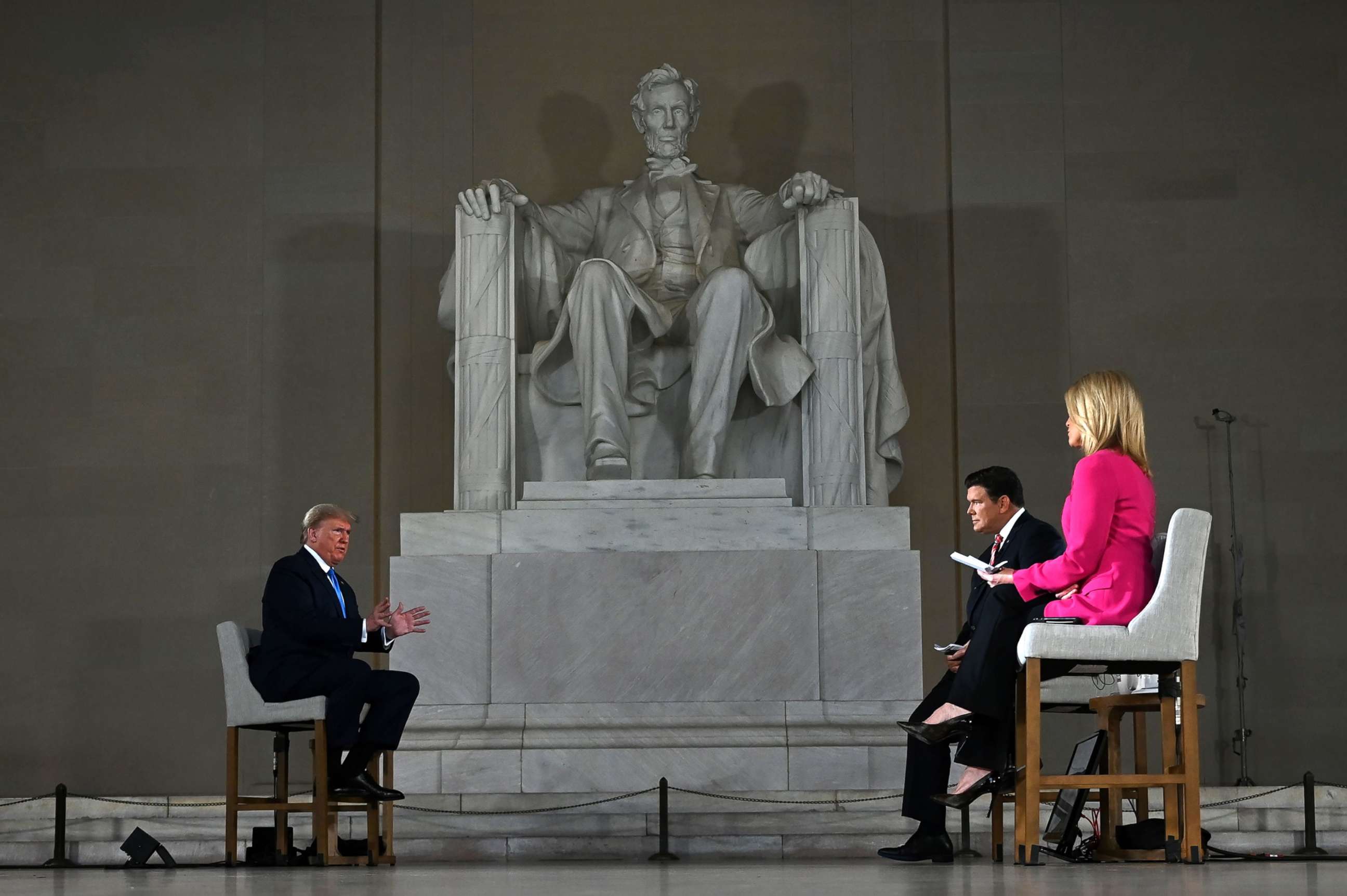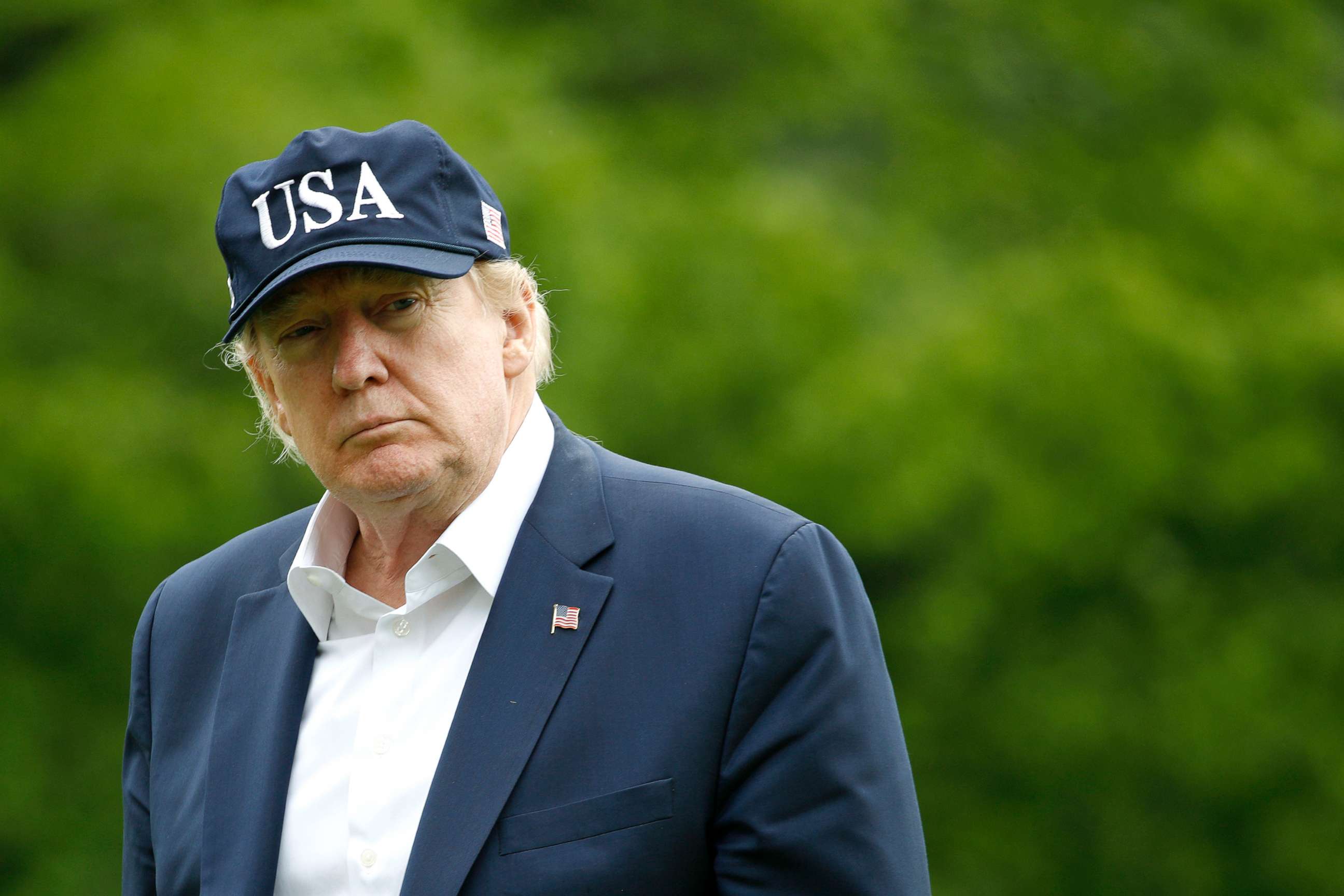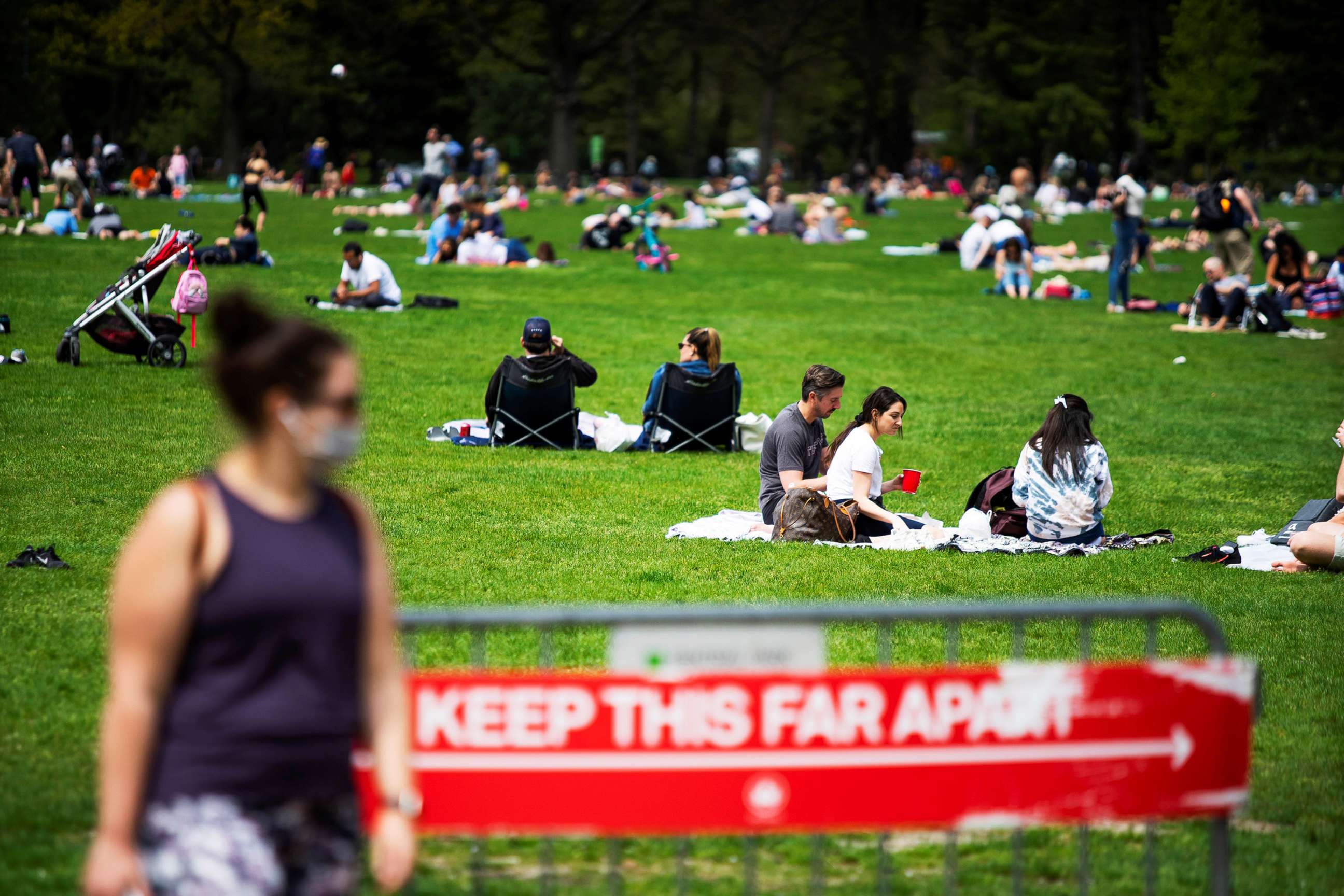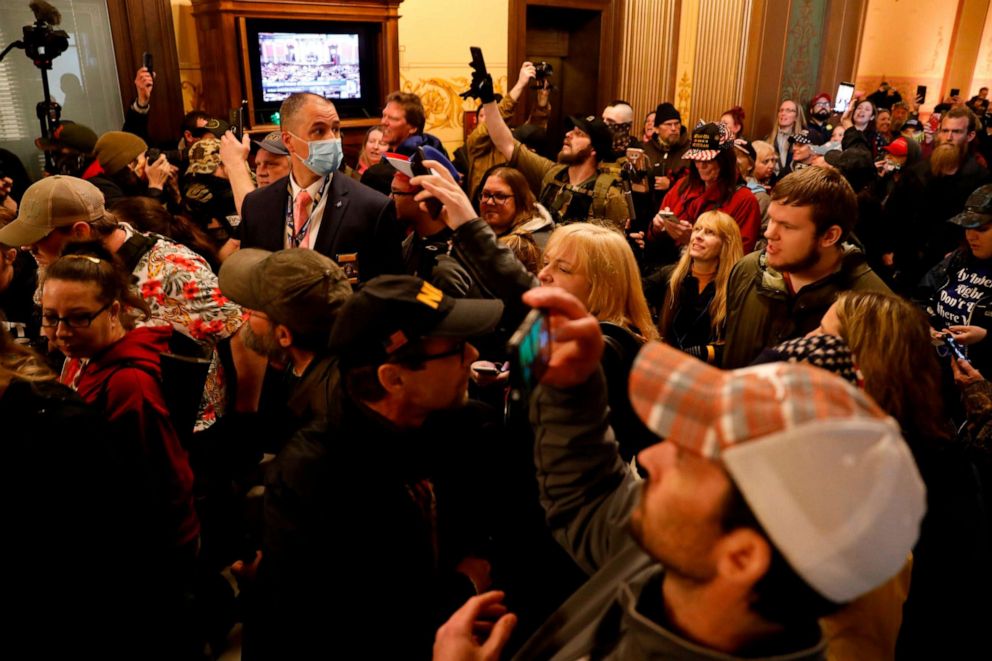Trump's reopening push at odds with new 100K death toll prediction, new draft projections
He now concedes that the number of deaths could reach 100,000 instead of 60,000.
As President Donald Trump for the second time in two weeks conceded his prior COVID-19 death toll projections have proven too optimistic, draft government projections forecast steadily growing rates of deaths and cases even while the president presses to reopen the country.
Trump on Sunday again revised upward his estimate of how many Americans will die from the coronavirus -- now saying it could be as many as 100,000 people -- even as he sought to take credit for the estimate not being worse than it is.
“We're going to lose anywhere from 75, 80 to 100,000 people. That's a horrible thing,” Trump acknowledged in a Fox News town hall. “We shouldn't lose one person over this. This should have been stopped in China. It should have been stopped. But, If we didn't do it, the minimum we would have lost is a million, two million, four million five. That's the minimum. We would have lost probably higher than, it’s possible, higher than 2.2.” He was referring to an estimate, endorsed by the White House, that 2.2 million Americans would die without any social distancing or other mitigation, compared to a much smaller number if precautions were taken.

Tune into ABC at 1 p.m. ET and ABC News Live at 4 p.m. ET every weekday for special coverage of the novel coronavirus with the full ABC News team, including the latest news, context and analysis.
Just last Monday, the president had said he expected 60,000 to 70,000 deaths.
“If you look at what original projections were -- 2.2 million, we are probably heading to 60,000-70,000,” Trump said. "It’s far too many. One person is too many for this. And I think we've made a lot of really good decisions."
But one week later, the president’s estimate is on track to be surpassed, with the current death toll now at more than 67,000 and climbing by the day.
On Monday, The New York Times published a draft document that projected a constant rise in daily rates of coronavirus cases and deaths throughout May.
The document warned that if social distancing was lifted too early that the United States would see about 200,000 new cases and 3,000 deaths per day by June 1 – eight times and nearly double the current rates, respectively – and was based on “preliminary analyses” that researchers at Johns Hopkins University had provided to the Federal Emergency Management Agency for its consideration.
"These preliminary analyses were provided to FEMA to aid in scenario planning—not to be used as forecasts—and the version published is not a final version," the Johns Hopkins Bloomberg School of Public Health said in a statement. "These preliminary results are not forecasts, and it is not accurate to present them as forecasts."
The White House and the Centers for Disease Control and Prevention did not endorse the document’s conclusions; the White House said other federal agencies had not properly vetted it.
"This data is not reflective of any of the modeling done by the task force or data that the task force has analyzed," White House Deputy Press Secretary Judd Deere said in a statement.
Late last week, the CDC predicted the COVID-19 death rate in the United States would rise, although it did not provide specific numbers.
"National-level forecasts continue to indicate that deaths are likely to rise in the coming weeks," it said in an update posted to its website on Friday.
It was just two weeks ago, on April 20, that Trump said he didn't anticipate the death toll to surpass 60,000.
“We’re going toward 50- or 60,000 people. That's at the lower -- as you know, the low number was supposed to be 100,000 people. We -- we could end up at 50 to 60. Okay? It’s horrible,” Trump said.
In late March, Trump and the White House coronavirus task force said their modeling suggested 100,000 to 240,000 would die in the U.S. even with aggressive social distancing measures in place across much of the country. Dr. Deborah Birx, the White House's coronavirus response coordinator, said Sunday that estimate remained in place even though the president's own public projections have proven prone to fluctuation.
“Our projections have always been between 100,000 and 240,000 American lives lost, and that’s with full mitigation and us learning from each other of how to social distance,” Birx said in an interview with "Fox News Sunday."

Trump has also changed his frame of reference for the virus. Initially, he repeatedly compared it to the 2009-2010 H1N1 pandemic, which killed an estimated 12,469 Americans; but then, when the coronvirus's death toll jumped higher, he took to juxtaposing it with the 1918 influenza pandemic that left around 675,000 Americans dead.
The president’s shifting assessments of the public health crisis come as he seeks to redirect focus toward the economic reopening of the country, assuring the country that “you can satisfy both” public health and economic concerns in staking out a path for the country to resume more normal economic functions into the summer, even as the virus is expected to persist.
From the start, he has tried to downplay concerns over the coronavirus's impact, seeking to allay fears as he seeks re-election. In late February, he predicted the number of cases in the United States "within a couple days is going to be down to close to zero."

“I really believe you can go to parks, you can go to beaches, you keep it -- you know, keep the spread, you keep -- you stay away a certain amount,” Trump said, crediting the public for doing an “incredible” job in social distancing. “That's one of the reasons -- if you call losing 80 or 90,000 people successful, but it's one of the reasons that we're not at that high end of the plane as opposed to the low end of the plane.”
But while the president speaks of striking the right balance in championing a resumption of normal life, he does so from the sidelines, since he has left state and local authorities in control of making their own decisions.
The president has been critical of strict measures adopted by Democratic Michigan Gov. Gretchen Whitmer and has sought to sympathize with demonstrators who have protested stay-at-home orders across the country.
“I think a lot of people want to go back. They just want to go back. You see it every day. You see demonstrations all over the country and those are meaningful demonstrations,” Trump said.

But Birx has struck a far more somber tone in response to demonstrations like those in Michigan, where hundreds crowded into the Capitol building, some without masks and still others carrying weapons, warning that their actions could have deadly consequences.
“It’s devastatingly worrisome to me personally, because if they go home and infect their grandmother or their grandfather who has a comorbid condition and they have a serious or an unfortunate outcome, they will feel guilty for the rest of our lives,” Birx said.
As the president calls for the country to get back to work, he too is set to resume some sense of normalcy with the resumption of official travel.
On Tuesday, Trump is set to travel to Phoenix, Arizona, to tour a Honeywell plant that has employed 500 people to manufacture N95 masks that have been in short supply and serve as a critical piece of personal protective gear for frontline healthcare workers.
The president traveled to Camp David this past weekend, but prior to that, hadn’t set foot of the White House grounds since March 28, when he traveled to Norfolk, Virginia, to see off a military hospital ship bound for New York City.
ABC News' Anne Flaherty contributed reporting.
This report was featured in the Tuesday, May 5, 2020, episode of “Start Here,” ABC News’ daily news podcast.
"Start Here" offers a straightforward look at the day's top stories in 20 minutes. Listen for free every weekday on Apple Podcasts, Google Podcasts, Spotify, the ABC News app or wherever you get your podcasts.
What to know about coronavirus:
- How it started and how to protect yourself: coronavirus explained
- What to do if you have symptoms: coronavirus symptoms
- Tracking the spread in the US and Worldwide: coronavirus map